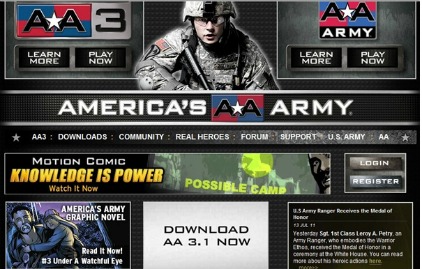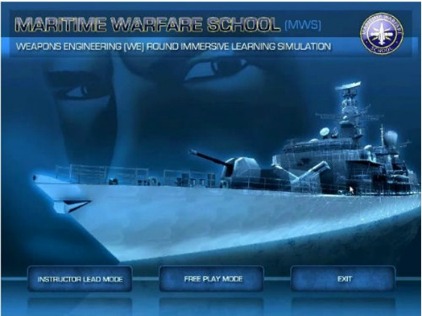As a part of our virtual training month, David Wortley takes a look at the development of virtual environments and immersive technology in learning and development.
The notions of immersion and virtuality have always been important components that contribute to the effectiveness of training activities. Immersion is closely related to focus, concentration, motivation, engagement, absorption and enjoyment, all of which are relevant to achieving learning goals.
Before any kind of educational technology, including written communication, existed mankind had passed on skills and knowledge from generation to generation through the engaging stories told by tribal elders. Good story-telling, narrative and an ability to transport learners to "another space" have been the hallmark of good teaching practices for centuries and today, even with the advanced technological tools at our disposal, these skills are still necessary in any training activity.
 "Like all new technologies seized on in their early development there is an inevitable amount of hype and unrealised expectations amongst the early adopters."
"Like all new technologies seized on in their early development there is an inevitable amount of hype and unrealised expectations amongst the early adopters."The birth of the internet in 1992 and the subsequent development and convergence of many digital media technologies including broadband, image processing, wireless, mobile, video games and social networks has led to what has been broadly described as immersive technologies. This phrase is very appropriate because it acts as a category that can encompass that portfolio of technologies to which we choose to dedicate a significant portion of our time, attention and money. We choose to do this because these technologies engage us and deliver benefits which justify this investment.
The principal application areas that have these engaging characteristics are video games, virtual worlds and social networks and it is because they are so successful in capturing our attention, influencing our behaviour and developing our skills many different stakeholders are beginning to explore how to leverage this phenomenon to meet their own objectives.
These stakeholders include commercial organisations using gamification to generate customer attraction and retention, political parties seeking to influence public opinion, non-governmental organisations trying to influence citizen behaviour to tackle the most serious issues facing society and educators and training professionals wanting to develop more effective ways of skill development and knowledge acquisition and retention.
Like all new technologies seized on in their early development there is an inevitable amount of hype and unrealised expectations amongst the early adopters and this, I believe, is because many people lose sight of the outcomes they wish to achieve and how (or even whether) these new practices can deliver any improvements. In this article I seek to briefly examine these three primary categories of application that comprise what we understand as immersive technologies.
1 Video games/serious games

The first video game to become acknowledged as the origin of the apparent oxymoron "serious game" was America’s Army (pictured) which was originally commissioned by the US military as an entertainment game designed to attract teenagers into their recruitment programme.
This initial use of the game as a marketing tool led to a realisation that these same technologies might also be applied to training soldiers for combat situations. This realisation led to the genre of serious game development in which the traditional ways of developing skills are either impractical, too dangerous or too costly. Military, emergency and medical sectors are the most obvious examples of the sectors where this would obviously apply.

America’s Army and most other serious games developed so far have been custom designed by specialist companies with the necessary portfolio of multi-disciplinary skills but now we are seeing the launch of serious game development toolkits like Caspian Learning’s Thinking Worlds platform (pictured above) that makes it possible for training professionals to develop their own solutions.
2 Virtual worlds

Using very similar technologies to video games, virtual worlds provide an immersive virtual environment that can be a mirror image of a real world or a completely fantasy world (such as Roma Nova virtual world simulation of Rome in 400 AD, pictured above) which takes its characters out of familiar spaces into an environment that could stimulate “out-of-the-box” thinking. Virtual worlds have been used for military training, especially in situations where soldiers need to be familiarised with a foreign territory, its people and their customs before active duty.
Virtual worlds are not constrained by the rules and restrictions that usually apply to true games technologies. Characters can move freely to explore these worlds and as well as training applications that provide trainees with orientation tools, virtual worlds are also in active use as a more immersive version of the virtual classroom technologies like Cisco’s Webex. In my opinion, the tools that are currently available in virtual worlds for managing virtual classroom content and interaction are inferior to what is used in tools live Webex and Live Meeting.
3 Social networks
At first glance, social networks might seem to be the odd man out as their primary purpose seems to be sharing pictures and activities with your friends. However, an increasing number of corporate organisations like BT, Intel (with its Intel Planet Blue Social Network, pictured below) and Dassault Systemes have developed and implemented their own custom in-house social networks as a knowledge management tool which can connect subject matter experts at any level in the organisation to those who need their skills and knowledge.

Conclusion
Immersive technologies will play an increasingly important role in corporate training as the technologies mature and become sufficiently easy for training professionals to manage without the involvement of external experts. It is also likely that all three of these technologies will converge and that future immersive training solutions will involve hybrid applications that have components of social networks, video games and 3D virtual worlds.
David Wortley is a freelance consultant on the strategic use of immersive and emerging technologies such as serious games, virtual worlds and social networks. His mission is to help organisations and individuals, leverage the power of these technologies for competitive advantage and business/personal development. Find out more at: www.davidwortley.com
As a part of our virtual training month, David Wortley takes a look at the development of virtual environments and immersive technology in learning and development.
The notions of immersion and virtuality have always been important components that contribute to the effectiveness of training activities. Immersion is closely related to focus, concentration, motivation, engagement, absorption and enjoyment, all of which are relevant to achieving learning goals.
Before any kind of educational technology, including written communication, existed mankind had passed on skills and knowledge from generation to generation through the engaging stories told by tribal elders. Good story-telling, narrative and an ability to transport learners to "another space" have been the hallmark of good teaching practices for centuries and today, even with the advanced technological tools at our disposal, these skills are still necessary in any training activity.
 "Like all new technologies seized on in their early development there is an inevitable amount of hype and unrealised expectations amongst the early adopters."
"Like all new technologies seized on in their early development there is an inevitable amount of hype and unrealised expectations amongst the early adopters."The birth of the internet in 1992 and the subsequent development and convergence of many digital media technologies including broadband, image processing, wireless, mobile, video games and social networks has led to what has been broadly described as immersive technologies. This phrase is very appropriate because it acts as a category that can encompass that portfolio of technologies to which we choose to dedicate a significant portion of our time, attention and money. We choose to do this because these technologies engage us and deliver benefits which justify this investment.
The principal application areas that have these engaging characteristics are video games, virtual worlds and social networks and it is because they are so successful in capturing our attention, influencing our behaviour and developing our skills many different stakeholders are beginning to explore how to leverage this phenomenon to meet their own objectives.
These stakeholders include commercial organisations using gamification to generate customer attraction and retention, political parties seeking to influence public opinion, non-governmental organisations trying to influence citizen behaviour to tackle the most serious issues facing society and educators and training professionals wanting to develop more effective ways of skill development and knowledge acquisition and retention.
Like all new technologies seized on in their early development there is an inevitable amount of hype and unrealised expectations amongst the early adopters and this, I believe, is because many people lose sight of the outcomes they wish to achieve and how (or even whether) these new practices can deliver any improvements. In this article I seek to briefly examine these three primary categories of application that comprise what we understand as immersive technologies.
1 Video games/serious games

The first video game to become acknowledged as the origin of the apparent oxymoron "serious game" was America’s Army (pictured) which was originally commissioned by the US military as an entertainment game designed to attract teenagers into their recruitment programme.
This initial use of the game as a marketing tool led to a realisation that these same technologies might also be applied to training soldiers for combat situations. This realisation led to the genre of serious game development in which the traditional ways of developing skills are either impractical, too dangerous or too costly. Military, emergency and medical sectors are the most obvious examples of the sectors where this would obviously apply.

America’s Army and most other serious games developed so far have been custom designed by specialist companies with the necessary portfolio of multi-disciplinary skills but now we are seeing the launch of serious game development toolkits like Caspian Learning’s Thinking Worlds platform (pictured above) that makes it possible for training professionals to develop their own solutions.
2 Virtual worlds

Using very similar technologies to video games, virtual worlds provide an immersive virtual environment that can be a mirror image of a real world or a completely fantasy world (such as Roma Nova virtual world simulation of Rome in 400 AD, pictured above) which takes its characters out of familiar spaces into an environment that could stimulate “out-of-the-box” thinking. Virtual worlds have been used for military training, especially in situations where soldiers need to be familiarised with a foreign territory, its people and their customs before active duty.
Virtual worlds are not constrained by the rules and restrictions that usually apply to true games technologies. Characters can move freely to explore these worlds and as well as training applications that provide trainees with orientation tools, virtual worlds are also in active use as a more immersive version of the virtual classroom technologies like Cisco’s Webex. In my opinion, the tools that are currently available in virtual worlds for managing virtual classroom content and interaction are inferior to what is used in tools live Webex and Live Meeting.
3 Social networks
At first glance, social networks might seem to be the odd man out as their primary purpose seems to be sharing pictures and activities with your friends. However, an increasing number of corporate organisations like BT, Intel (with its Intel Planet Blue Social Network, pictured below) and Dassault Systemes have developed and implemented their own custom in-house social networks as a knowledge management tool which can connect subject matter experts at any level in the organisation to those who need their skills and knowledge.

Conclusion
Immersive technologies will play an increasingly important role in corporate training as the technologies mature and become sufficiently easy for training professionals to manage without the involvement of external experts. It is also likely that all three of these technologies will converge and that future immersive training solutions will involve hybrid applications that have components of social networks, video games and 3D virtual worlds.
David Wortley is a freelance consultant on the strategic use of immersive and emerging technologies such as serious games, virtual worlds and social networks. His mission is to help organisations and individuals, leverage the power of these technologies for competitive advantage and business/personal development. Find out more at: www.davidwortley.com




